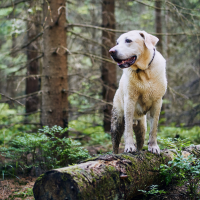Each and every pet has certain needs that should be recognized and respected. Quality of life is a way to refer to and discuss the day-to-day life and lifestyle of a pet reaching the end of its life. If we can successfully meet an ailing or chronically ill pet’s basic needs, then we can feel confident that our efforts in preserving life are justified.
What are some of the conditions that might cause a pet’s quality of life to deteriorate?
Most senior pets develop one or more medical conditions that tend to worsen over time. Examples of chronic medical conditions common in older pets include:
- Blindness. Generally occurs gradually from changes in the lens of the eye.
- Cancer. The risk of cancers of all types increases with age.
- Chronic renal disease. This degenerative kidney disease leads to the decreased ability of the kidneys to filter biological waste from the blood.
- Deafness. Generally occurs gradually over time as the eardrum becomes less flexible.
- Osteoarthritis. Painful inflammation and deterioration of the joints.
- Overweight/obesity. More than half of senior pets are overweight or obese, reducing their quality of life.
Is there a way to objectively measure my pet’s quality of life?
Dr. Alice Villalobos, a veterinary oncologist, has developed a quality-of-life scale for pets, so owners can act on behalf of their beloved animal family members as a pet’s end of life approaches. The quality-of-life scale provides guidelines that help owners and veterinarians work together to maintain a healthy human-animal bond. The scale provides a tool with which to measure the success of a palliative care or hospice plan for a pet with life-limiting disease and to fine-tune that care/plan.
Dr. Villalobos’ quality-of-life scale looks at seven different categories and scores each parameter from 1 to 10, with 10 being the best. A score above 5 in each category, or an overall score greater than 35, suggests that the pet’s quality of life is acceptable and that it is reasonable to continue end-of-life care and support.
The categories to be measured can be remembered as “HHHHHMM.” This list of letters stands for Hurt, Hunger, Hydration, Hygiene, Happiness, Mobility, and More good days than bad.
What does each category mean for a pet approaching the end of its life?
Hurt. Adequate pain control, including the ability to breathe properly, is an absolute necessity. Most pet owners do not know that being able to breathe is ranked as an important pain management strategy. A pet may benefit from receiving oxygen at home, and it may not be as challenging to provide as you think. Other methods of controlling pain may include oral or injectable medication.
Hunger. If a pet cannot eat properly or willingly, first try hand-feeding. If this is not successful, then it may be appropriate to consider a feeding tube, particularly if oral medication must be given. Blended or liquid diets may offer another alternative.
Hydration. Fluid under the skin is an easy and well-tolerated way to supplement what an ailing pet is drinking. This is not a heroic measure but can really help an older pet feel better.
Hygiene. Can the pet be brushed, combed, and kept clean? Is the coat matted? Can the pet move away from stool or urine if it has an accident? Is there a tumor that has outgrown its blood supply and now has an odor or discharge? Often, a dilute solution of shampoo/soap from your veterinarian on a sponge or washcloth can be used to clear dead cells away without causing pain. Your veterinary healthcare team can help work out the details of this kind of care. It is also important to turn bedridden pets regularly, keep them clean and dry, and ensure that they have adequate padding underneath to prevent bedsores.
Happiness. Is the pet experiencing joy or mental stimulation? Pets, like dogs, communicate with their eyes, as well as by wagging their tails. Is the ailing pet still interacting with family members and with the environment? Placing comfortable beds near family activities helps a pet remain engaged in life. When it comes to dogs, they are social animals and can become depressed when they are separated from their pack.
Mobility. If the pet can no longer move around on its own, it may be time to consider one of the many mobility devices that are available. A sling or harness for support may be all that is required. Other options, depending on how much support is needed, include two-wheel carts, four-wheel carts, and wagons. Mobility devices allow a pet to stay active. This is particularly important for bigger dogs that cannot simply be carried from place to place. Mobility and hygiene go together when a pet is bedridden. Your veterinarian is an important resource when working through mobility issues.
More good days than bad. When there are too many bad days in a row, or if the pet seems to be turned off to life, quality of life is compromised. Bad days may mean nausea, vomiting, diarrhea, seizures, frustration, unrelenting pain/discomfort, or inability to breathe.
How will I know it’s the right time to consider euthanasia?
A healthy human-animal bond requires a two-way exchange, and when that exchange is gone, the time for humane euthanasia has arrived. It is important to plan for the end of life before that time arrives, and the quality-of-life scale can help with that planning. You can help your pet maintain a good day-to-day life experience by using this scale to regularly measure the parameters that evaluate how well your pet’s basic needs are being met. This scale can also help you clarify the decision for euthanasia, hopefully relieving anxiety and regret about your beloved pet’s end of life.
Can my veterinarian help me decide when to let go?
Veterinarians are often asked to help pet owners with the hard choice of euthanasia. Your veterinarian is always there to help with these very difficult decisions. Here at Snodgrass Veterinary Medical Center, we schedule quality-of-life exams for you and your veterinarian to discuss your pet’s health and happiness, as well as the difficult option of euthanasia if necessary.
© Copyright 2019 LifeLearn Inc. Used and/or modified with permission under license.






